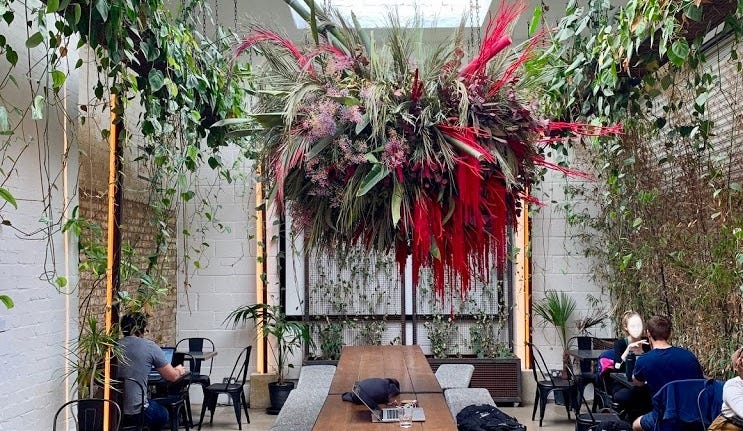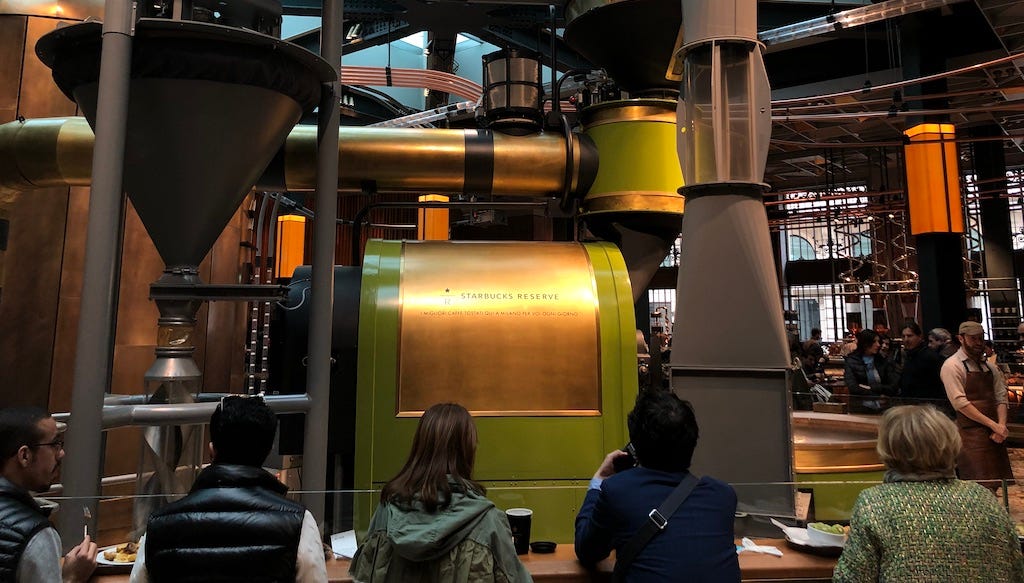Third Wave Disruption of the Italian Coffee Market

On a recent trip to Milan, I was excited to partake in many activities — eat great food, drink wine and generally relax. One of the things I was most excited to visit was the new Starbucks Milano Roastery located in the historic turn-of-the-century Palazzo Delle Poste building on Piazza Cordusio — just a few minutes walk from Milan Cathedral (Duomo di Milano). I was shocked to see queues still forming outside almost six months on since its launch in 2018.
With a strong heritage of traditional coffee drinking culture, Italian’s have long favoured the consumption of espresso from local independent coffee shops. Some may call a Starbucks in Italy blasphemous, but to me, it represents an exciting turning point in the Italian coffee market, 47 years after Starbucks founder Howard Schultz was inspired by the country.

Lean Canvas Takedown
The Problem
- Increasing demand for higher quality coffee
- Unable to spend long periods in a store to work or speak with friends
History of coffee in Italy dates back to the 16th century when Venice became one of the first European ports to import coffee beans. Since then, the country has enjoyed a rich history of drinking the black stuff and developing novel new brewing techniques like espresso.
It’s impossible to ignore Italy’s innovations in this space, but like all innovation growth curves, at some point, disruption and potential succession will come — sometimes suddenly. To understand this, we need to talk about the second and third coffee waves.
The second coffee wave movement — mostly pioneered and popularised by Starbucks — is a coffee drinking style most people will be familiar with. It helped popularise and educate consumers on powerfully caffeinated drinks and entice them out of their homes and into welcoming interiors of coffee shops to socialise and work. The drinks leading this movement are heavily roasted, heavily caffeinated and came in a variety of styles with multiple syrups, milk and foams, crescendoing with the sparkling all-dancing unicorn Frappuccino — genuinely embracing the American ‘have it your way’ mantra. Compared with the Italians offer, this style of drink is generally considered inferior in quality.
The third wave is the period we are currently experiencing. This wave emphasises quality coffee, roasting and brewing techniques, bean origins and an environment tailored to entertain our Instagram feeds. Coffee shops around the world have embraced this trend, and it has led to a surge in new educated customers who have learned to enjoy things like V60, air roasting and single-origin brews. Coffee is now experienced like wine or delicate tea with a spectrum of flavours to match.
Italy it seems, maybe at the start of experiencing this trend. If other European countries are anything to go by, the country could soon see an increased demand for this third wave experience. I worry the Italians could suddenly find themselves displaced by foreign brands ready to cater to this market.
Customer Segments
- Young adult demographic (20–40-year-olds)
- Middle-high income
- Highly travelled
Customers likely to be drawn to third-wave coffee houses will be below the age of 40, social media savvy, come from middle to high-income households, and I think importantly will have spent time working, studying and travelling abroad.
Professor Jonathan’s Morris PhD is a Research Professor at the University of Hertfordshire, UK who has written extensively on Italian coffee history recently said
“It will be very much a generational change where Specialty will first find its way into the hearts of the younger consumers and the simple neighbourhood bars will probably be the last stand of traditional coffee.”
Typical coffee drinkers of Italy encompass people of all walks of life and socioeconomic backgrounds. It’s not uncommon to hear people buying an espresso for the next person walking through the door who can not afford it. The third wave coffee experience is much more expensive than a typical espresso you can buy from any street corner in the country and because of this will need to focus on this niche customer segment for the foreseeable future.
The Market
Italy has the second-largest consumption of coffee in Europe. The country imported approximately 5.7 million 60 kg bags of green coffee in 2015 (second only to Germany) and drank around fourteen billion espresso coffees each year, accounting for 14% of total European Union consumption.
Independent cafes hold more than 90% of the Italy coffee market, while international chain cafes hold a meagre share.
The consumption of speciality coffee is rising as shoppers are prioritising experience over price in the use of gourmet and speciality coffee beverages.
Solution
- Focus on high-quality speciality coffees
- Customer education on coffee products like V60
- Space designed for hanging out or work
To win the hearts of the Italian public, I’m not sure importing typical Brooklyn/European third-wave coffee shops will be enough. Entrepreneurs will need to find a way to blend both the local coffee drinking culture with third-wave offerings. The solution needs to provide customers with both a fantastic variety of coffees and education on the drinking experience.
Currently, the Italian culture of drinking coffee is one where customers expect to order, be served and have finished their drink within 40 seconds of entering a store (usually standing up).
There needs to be an emphasis on coffee as a social and third space experience (a place to hang out between work and home) rather than merely a transactional one.
Starbucks president Martin Brok recently best explained it
“We didn’t come to Milan to demonstrate how good we are or teach Italians how to drink coffee our way — but to share our love of coffee,”

Unfair Advantage
- Prime retail locations
- Access to high-quality coffees
- Shop layout and design
- Access to experienced baristas
Creating an unfair advantage will be challenging. Italy already has a taste for higher quality coffees compared with most countries and the average price of an espresso is around one Euro. You can find a coffee bar on almost every street corner across the country.
Coffee quality is considered by industry professionals to be the leading success factor for a coffee shop concept in Italy. Other essential factors include high-quality customer service and effective store management
Retail locations placed in central areas or neighbourhoods with high net worth individuals can help ensure more convenient access to target customers.
Additionally, the importance of ensuring the interior design of a shop is welcoming, delightful and photographs well. If executed properly, this should help differentiate a store into something customers will have heard about/seen on social media and be willing to travel to experience.
Revenue Streams
- Coffee sales
- Food and snack sales
- Other beverage sales (soft drinks, alcohol)
- Wholesale
Revenue for a store may mostly come from coffee, beverage and food sales. There is an opportunity to franchise a store if it performs well, and the local market can support additional outlets.
If you can roast or process coffee in a specific way, there may be opportunities to wholesale your product or develop training courses to allow other retail shops to learn from your example.
Business Costs
- Staff hiring and training
- Retail space
- Product stock
- Interior design
- Advertising and promotion
Finding, hiring and training staff are likely to be some of the most significant costs associated with a business like this, mainly if you are relying on a specialised skill set to produce specific drinks.
As mentioned before, interior design should not be skimped on. It doesn’t have to be expensive, but it does need to be considered for a customer base willing to spend extended amounts of time in a venue and something people want to share on social media. The latter can serve as ‘free’ advertising.
Final Thoughts
From Adrian
The prospect of a revitalised coffee in Italy excites me. Milan specifically helped teach the world about how great coffee can be. I believe that the entry of third-wave players be they independent stores or chains like Starbucks will encourage local entrepreneurs to develop further how we think about and drink coffee.
Italians bring charm and character to their coffee establishments while the third wave itself is in danger of becoming homogenised not just in their product offerings but also in aesthetic, somewhere between the two I believe, lies a bright future.
